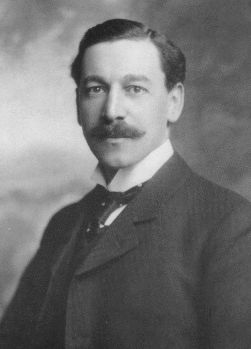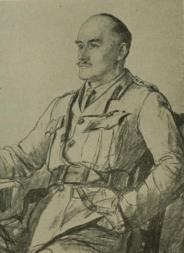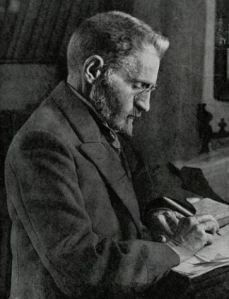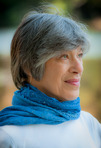Marilyn Oser's Blog, page 10
March 27, 2013
10 Things You Need to Know About… Baron Edmond de Rothschild
1. He was born in August 1845 in Boulogne-Sur-Seine, the youngest son of James Jacob Rothschild, a French member of the Rothschild banking family.
2. His interests were not financial, but artistic and scientific. He founded institutions for scientific research in France, Spain and England, and sponsored archeological digs in Egypt, Syria and Palestine. A prodigious collector of art, he was to bequeath to the Louvre more than 40,000 engravings, almost 3000 drawings and 500 illustrated books. The gift included more than 100 drawings and engravings by Rembrandt. And this was only a part of his collection!
 3. In the wake of the Russian pogroms of 1881-2, he began cutting back on his purchases of art and buying up land from Ottoman landlords in Palestine, instead.
3. In the wake of the Russian pogroms of 1881-2, he began cutting back on his purchases of art and buying up land from Ottoman landlords in Palestine, instead.
4. It is estimated that he spent over $50 million supporting Jewish settlements in Palestine. He was the patron of Rishon LeZion, the first of the new settlements. Between 1883-9 he subsidized it, as well as Zikhron Yaakov, Rosh Pinna and Ekron, and over the years donated significant funds to other settlements, as well. Between 1900 and 1918, the number of Zionist colonies grew from 19 to 47, largely with his funding.
5. He promoted economic development, notably through wineries at Rishon LeZion and Zikhron Yaakov. In addition, he supported research in electricity and financed an electric generating station in Palestine.
6. Because of his involvement in so many young settlements, he became known as the Father of the Yishuv. And because of his wish to remain anonymous, in the background, he was called HaNadiv HaYadu’a, the Known Benefactor.
7. One thing he was known for was encouraging settlement by pious, Hebrew-speaking, agricultural immigrants.
8. In a 1934 letter to the League of Nations, he said, “the struggle to put an end to the Wandering Jew could not have as its result the creation of the Wandering Arab.”
 9. At his death in 1934, he left a legacy which included nearly 500,000 dunams of land in what is now Israel, and nearly 30 settlements.
9. At his death in 1934, he left a legacy which included nearly 500,000 dunams of land in what is now Israel, and nearly 30 settlements.
10. His will included a request to be buried in the Land of Israel. Originally interred in Paris, his remains and those of his wife were transported to Israel in 1954 and laid to rest in Ramat HaNadiv Memorial Gardens. In his memory, his son provided funds for the construction of the Knesset.
Want to know more? There’s an interesting video on YouTube. Search on “French Baron de Rothschild.”








March 13, 2013
10 Things You Need to Know About… Chaim Bograshov
1. He was born in the Crimea in 1876.
2. He earned a Ph.D. at the University of Bern in Switzerland, then returned to Russia, where he taught in Hebrew schools.
3. An early Zionist, he was a delegate to the Sixth Zionist Congress held in Basle in 1903, where he opposed the British plan for using Uganda as a Jewish homeland.
 4. Not long afterward, he made aliyah to Palestine, where he helped establish Gymnasia Herzliya, the first Hebrew high school in Eretz Yisrael. He was one of its first teachers, even before the establishment of Tel Aviv; later, he was its principal, and he continued to teach geology and geography there until 1951.
4. Not long afterward, he made aliyah to Palestine, where he helped establish Gymnasia Herzliya, the first Hebrew high school in Eretz Yisrael. He was one of its first teachers, even before the establishment of Tel Aviv; later, he was its principal, and he continued to teach geology and geography there until 1951.
5. At the school, boys and girls attended classes together. Classes were conducted in Hebrew, and the bible was taught as a literary text, bareheaded. School trips were a part of the curriculum. As Tel Aviv developed around it, the school became a cultural and intellectual center.
6. In 1921, under the new British mandate that was established after the First World War, Bograshov was elected to serve as a representative to the Tel Aviv City Council and the Assembly of Representatives, the parliamentary body of the Jewish community. He served in these capacities until 1930.
7. Following the Arab riots of 1921, he established the Nordia district in Tel Aviv for Jews who had been left homeless. Bograshov Street, the main thoroughfare crossing the Nordia district, was named for him while he was still alive. His response? He changed his name to Haim Boger!
8. One of the leaders of the Union of General Zionists, he was elected to the Knesset in 1951. Originally centrist, the General Zionists moved toward the right in opposition to the labor movement. Though the party did well that year, winning 20 seats, the success did not last. He lost his seat in 1955.
9. He died in 1963.
 10. Here’s the kind of teacher he was: A young man named Alexander Eig was an incorrigible student who wouldn’t go to school, preferring to be outdoors. Eventually, he became a gardener and worked for Chaim Bograshov, among others. It was Bograshov who persuaded him to enroll in the gymnasium. Eig later became Director of Botany at Hebrew University and the man who initiated its botanical gardens. If you’d like to see a lesson plan written in Bograshov’s hand, go to http://www.liveauctioneers.com/item/2582666.
10. Here’s the kind of teacher he was: A young man named Alexander Eig was an incorrigible student who wouldn’t go to school, preferring to be outdoors. Eventually, he became a gardener and worked for Chaim Bograshov, among others. It was Bograshov who persuaded him to enroll in the gymnasium. Eig later became Director of Botany at Hebrew University and the man who initiated its botanical gardens. If you’d like to see a lesson plan written in Bograshov’s hand, go to http://www.liveauctioneers.com/item/2582666.








March 6, 2013
10 Things You Need to Know About… Herbert Louis Samuel
1. He was born in Liverpool in November 1870 and raised in London in an Orthodox Jewish home.
2. The son of a prosperous banker, he was educated at Balliol College, Oxford.
3. In 1902, he became a member of Parliament and in 1909 was appointed a cabinet minister, the first unconverted Jew to serve in such a role. He was not an observant Jew, but neither did he spurn his religion.
4. World War broke out. Britain declared war on the Ottoman Empire in November 1914. Two months later, Samuel circulated to the cabinet a memo on “The Future of Palestine;” in it, he suggested that Palestine, then under Ottoman rule, become a home for the Jewish people. He also put forth the idea of establishing a British protectorate.
4. In his memo he wrote, “The Jewish brain is a physiological product not to be despised. For fifteen centuries the race produced in Palestine a constant succession of great men – statesmen and prophets, judges and soldiers. If a body be again given in which its soul can lodge, it may again enrich the world. Till full scope is granted, as Macaulay said in the House of Commons, ‘let us not presume to say that there is no genius among the countrymen of Isaiah, no heroism among the descendants of the Maccabees.’”
5. In 1920, before the League of Nations had even approved the British Mandate, Samuel was appointed High Commissioner of Palestine and continued to serve in that capacity until 1925 – thus becoming, as he said, the first Jew in 2000 years to govern the Land of Israel.
6. He recognized Hebrew as one of the three official languages of the land.
7. He tried to support Jewish immigration while at the same time mollifying Arab objections – a policy that ultimately won him the praise of neither Zionists nor Arabists. Even today, what he saw as an even-handed policy continues to be a bone of contention. Generally, it has been argued that his policies slowed the pace of immigration, but a book published in 1999 takes the Palestinian view, arguing that his policies paved the way for the establishment of the State of Israel.
8. Upon his return to Britain, he remained active and powerful in politics. In 1938, he supported the Kindertransport movement to bring Jewish refugee children from Europe by appealing for homes to take them in.
9. In 1939 he was granted the title Viscount Samuel and later became leader of the Liberal Party in the House of Lords.
“It is easy to be tolerant of the principles of other people if you have none of your own.” – Herbert Samuel








February 27, 2013
10 Things You Need to Know About… David Frischmann
1. He was born in Poland near Lodz in 1859 and at an early age showed literary talent. At fifteen, he published both a sonnet translated into Hebrew from Heine’s German and an original short story in Hebrew.
2. He studied philology, philosophy and history of art at the University of Breslau.
3. His first volume of short stories highlighted Jewish characters in conflict with the attitudes and traditions of their society – a rabbi who smokes on Shabbat; an accomplished singer who abandons her people for a career.
4. Though he never made aliyah, he visited Palestine twice, once in 1911 and again in 1912, and published The Land of Israel in 1913 – writing with enormous feeling about the land, its holy places, the pioneers and the beginnings of the revival of spoken Hebrew, about which he’d been tepid before his trips.
5. He was not an observant Jew. He thought one should act according to his own conscience, rather than religious law or tradition. He did not believe that Judaism could be adapted to the spirit of his time.
6. Nonetheless, he identified with Abraham as an iconoclast, one who strikes out on his own rather than following the old ways.

Courtesy of EAC Gallery
7. Frischmann was an innovator in style, structure and content who achieve literary fame. Devoted to literature, he refused to employ his pen for political purposes, which he considered petty. His “Letters Concerning Literature” is one of the foundations texts of modern Hebrew literary criticism.
8. Throughout his literary career, he produced superb translations into Hebrew: of George Eliot, Pushkin, Byron, Neitsche and Hans Christian Andersen; of Goethe, Oscar Wilde, Anatole France and Shakespeare, and even a magnificent rendering of the poetry of Indian writer Rabindranath Tagore.
9. Bar Midbar, published in 1923, was a collection of stories written in biblical style and language, set in the desert following the Exodus from Egypt. The tales highlight the quandary of the Israelites, torn between their familiar habits and lusts on the one hand, and the new moral law that has been given to them on the other. I have not been able to find evidence that these stories were ever translated into English. If somebody out there knows differently, please leave a comment.
10. He died and was buried in Berlin, August 1922 .
Here is an early poem:
I shall not go with them, I shall not go; their ways are not mine,
I cannot bear their prattle, their expressions, their talk or their conversation.
I cannot tolerate their ways, their manners, or their thoughts,
Their prophets are not my prophets, their angels are not my angels.
Thoughts repel me, thoughts without minds,
I detest feelings, feelings without hearts.








February 20, 2013
10 Things You Need to Know About… Abraham Mapu
 1. Abraham Mapu was born in 1808 near Kovno (now Kaunas), Lithuania.
1. Abraham Mapu was born in 1808 near Kovno (now Kaunas), Lithuania.
2. An autodidact, he taught himself German, French, Russian and Latin.
3. He earned his living as an itinerant teacher of Jewish children.
4. He was a member of Haskalah, a movement that favored adoption of enlightenment ideas and values and pressed for more engagement of Jews in the secular European world.
5. He wrote novels in Hebrew. The first of these, Ahavat Zion (Love of Zion), was published in 1853. Ahavat Zion is considered the first modern novel in Hebrew. It had an important influence on later fiction, as well as on the adaptation of Hebrew to modern life. It was translated into English as Amnon, Prince and Peasant.
6. His novels, set in ancient Israel, had intricate plots detailed in poetic language. Their utopian vision of ancient Jewish life contrasted sharply with the reality of 19th-century life in Eastern Europe. His characters were larger-than-life depictions of the enlightenment ideal.
7. These works became catalysts for the Zionist movement: David Ben-Gurion, in particular, was inspired by them.
8. Mapu also published several textbooks in Hebrew.
9. Perhaps the first modern Jewish historical novelist, he was unable to support himself by his writing (so what else is new?).
10. He died in Konigsberg, Prussia, in 1867.








February 13, 2013
10 Things You Need to Know About… Edmund Henry Hynman Allenby
1. No, he wasn’t a Jew (how many Jews in those days could afford so many names?), but he was important to the history of Jews in Palestine. The boy who would become the first Viscount Allenby was born in Nottinghamshire in April 1861. Early on, he developed a passion for poetry, ornithology and botany.
2. He was educated at the Royal Military College at Sandhurst and at the Military Staff College in Camberley, England. He distinguished himself in the Second Boer War (1899-1902), ending as a Colonel.
3. During World War I, he served initially on the western front. As Commander of the Third Army, he came under criticism for the failure of the assaults at the Battle of the Somme in 1916 and the Battle of Arras in 1917.
4. He was sent to command the British Expeditionary Force in Egypt in June 1917. He reorganized the force, enlisting the aid of T.E. Lawrence in winning the support of Arab irregulars; by the fall of 1917, he had taken Gaza with a surprise attack on Beersheva.
5. When he captured Jerusalem in December 1917, he officially entered the city on foot through the Jaffa Gate – rather than on horseback – as a sign of respect for the city’s holiness. It was an important victory for the Allies. This photo appeared in newspapers around the world.
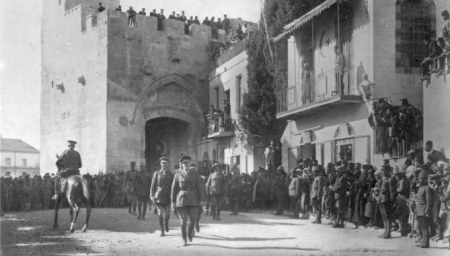 6. His troops called him “The Bull” for his physical prowess, his sometimes-abrupt manner and his strictness. The Arabs called him Allah Nebi, meaning “the man sent by God.”
6. His troops called him “The Bull” for his physical prowess, his sometimes-abrupt manner and his strictness. The Arabs called him Allah Nebi, meaning “the man sent by God.”
7. In a war in which commanders typically stayed far in the rear, Allenby was known and admired by his soldiers for having his headquarters close to the front lines.
8. With a brilliant scheme of deception and diversion, in September 1918 Allenby’s troops broke through Turkish lines at the Battle of Megiddo – in which two battalions of Jewish volunteers served bravely. Using cavalry and airplanes, Allenby achieved lightning success.
9. Turkey surrendered by the end of October 1918. Allenby’s success virtually guaranteed the British mandate in Palestine.
10. He was made a field marshall in 1919 and ennobled as Viscount. He served as High Commissioner for Egypt and the Sudan until 1925. In May 1936 he died of a ruptured aneurysm; his ashes are buried in Westminster Abbey.
You’ll find Edmund Allenby in my novel Rivka’s War, coming out this spring.








February 6, 2013
12 Things You Need to Know About… Eliezer Ben-Yehuda
1. He was born Eliezer Yitzhak Perelman in Lithuania on January 7, 1858. He studied in a yeshiva and then a Russian gymnasium, completing his studies in 1877. That same year, he was stirred by the Bulgarian struggle for independence from the Ottoman Empire, and he began to contemplate the idea that Jews might claim their own land and language.
2. He left Russia in 1878 to study medicine in Paris, with the idea of practicing this profession in Palestine. However, he soon had to abandon this plan, when he contracted tuberculosis.
3. He arrived in Palestine in 1881 at the beginning of the waves of Jewish immigration to come, having already published a number of articles on renewing the Jewish people, their land and language.
4. Though he knew French, German and Russian, he spoke only Hebrew to every Jew. His household was the first Hebrew-speaking home in Palestine, and his son, born in 1882, was to be the first child in modern history to hear and speak only Hebrew.
5. He coined new Hebrew words for everyday objects: doll, jelly, towel, bicycle.
6. He became involved in the first efforts in Palestine to use Hebrew as the standard language in school – despite the dearth of textbooks, materials, games, songs, vocabulary, and teachers who could follow his example.
7. In 1884, he began his own weekly newspaper, Hatzvi (The Deer); it was not the first or only Hebrew newspaper, but certainly the most far-reaching, introducing new words into parlance and discussing not only Jewish topics, but (to the extent the Ottoman authority would allow) general political, social and cultural topics. He advocated for a plain, unadorned prose style without the inflated rhetoric that had been popular.
8. To further the adoption of Hebrew, he became a lexicographer, defining the language along strict philological lines, eliminating Aramaic and other foreign words from ancient texts – though he did introduce transliterations from modern tongues. This resulted in his Complete Dictionary of Ancient and Modern Hebrew. He worked on it day and night, publishing six volumes in his lifetime. After his death, his wife and son continued to publish his manuscript, completing the seventeenth, and last, volume in 1959.
9. In 1890, he founded the Hebrew Language Council to arbitrate matters of terminology, pronunciation, spelling and punctuation pertaining to the use of Hebrew.
10. In November 1922, the British mandate authorities recognized Hebrew as the official language of the Jews of Palestine. A month later, Eliezer Ben-Yehuda died. His is buried on the Mount of Olives in Jerusalem.
11. His work did not go unopposed. The orthodox community bitterly resented his attempts to revitalize the holy tongue; they even managed to get him thrown in prison for a time.
12. He is my hero.
“Before Ben-Yehuda…
Jews could speak Hebrew;
after him they did.”
January 30, 2013
10 Things You Need to Know About… Menahem Sheinkin
 1. Menahem Sheinkin was born in Russia in 1871.
1. Menahem Sheinkin was born in Russia in 1871.
2. A committed Zionist, he moved to Palestine in 1906 and headed up the World Zionist Organi-zation’s information and immigration office in Jaffa.
3. Critical of the Labor Zionists, with their socialist leanings, he was among the first to point out the difficulty of turning Zionist visions into practical blueprints. To this end, he sought to attract immigrants who could support themselves “respectably,” who had a skill and were not impoverished. He wrote, “This immigration lowers us in the eyes of the government and the local populace. They see poor, ragged, miserable people with tattered bundles, the dregs of society, who are unlikely to do the country any good…If there are never any wealthy, respectable, well-dressed, attractive people stepping ashore, the word ‘Jew’ will become synonymous for weak, inferior and low-class.”
4. Palestine, he felt, should be a place where Jews felt instantly at home. More Jewish immigrants felt at home not on farms, but in cities. At a time when those who worked the land were lauded, he said that craftspeople were equally involved in building the land and should be equally valued as pioneers.
5. Not only was he one of the founders of Tel Aviv, but it was he who suggested the city’s name, based on a translation into Hebrew of Herzl’s Altneuland.
6. He was also one of the founders of Herzlia Gymnasium, the first Hebrew high school in Palestine.
7. In 1924, he died in a traffic accident while on a Zionist mission in Chicago. He is buried in Trumpeldor Cemetery in Tel Aviv.
8. Tel Aviv’s Sheinkin Street was once a modest neighborhood with housing built for artisans. It is because of this connection to craftsmanship that the street was named for him after his death.
 9. Do you find it ironic that the street became chic and trendy, filled with well-dressed and attractive people shopping in its stores and drinking coffee in its cafes? Just the sort of people Sheinkin wanted to attract, it seems!
9. Do you find it ironic that the street became chic and trendy, filled with well-dressed and attractive people shopping in its stores and drinking coffee in its cafes? Just the sort of people Sheinkin wanted to attract, it seems!








January 23, 2013
10 Things You Need to Know About… Solomon ben Judah Ibn Gabriol
1. Born in Malaga circa 1021, he was also known as Abu Ayyub Sulaiman Ibn Yahya Ibn Jabirul.
2. He died in Valencia circa 1058 after a life of wandering. One legend about his death is that he was murdered by a poet jealous of his gifts, then secretly buried beneath a fig tree; that the fruit of the tree was so abundant and so sweet, people investigated, found Gabirol’s remains, and brought the murderer to justice. A second legend about his death is that he was trampled by an Arab horseman.
3. A legend about his life is that he created a golem.
4. A poet, he used strict Arabic meter, and his poems are rhymed. His finest poems are written in praise of wisdom, but he also wrote poetry complaining about his lot in life.
5. His poetical works in Hebrew are of remarkable complexity involving alphabetic and acrostic formats. He wrote magnificent liturgical verses–hymns and piyyutim for Shabbat and festivals. One piece, Keter Malkut (Royal Crown) appears in the Yom Kippur prayerbook in many countries.
6. Also known as Avicebron, he was one of the first in medieval times to promote neoplatonic thought. His Fons Vitae (Fountain of Life) argues that all creation is composed of matter and form, with matter becoming less spiritual the further it is removed from its source, God.
7. His philosophy had less influence on Jewish thought than on Christian thought, particularly the philosophy of Duns Scotus and medieval Scholasticism.
8. His The Improvement of the Moral Qualities sought to systematize ethics in relation to the senses. In his thought, each of the senses is an instrument of two virtues and two vices.
9. For example, sight is associated with pride and meekness, shame and impudence. Touch is associated with liberality and niggardliness, valor and cowardice–liberality because a generous man is called open-handed; niggardliness because the miser is called close-fisted. Kind of ingenious, no?
10. Here are some proverbs attributed to Ibn Gabriol:
The  test of a good man is to be patient with bad news.
test of a good man is to be patient with bad news.
As long as a word remains unspoken, you are its master; once you utter it, you are its slave.
The beginning of wisdom is to desire it.









